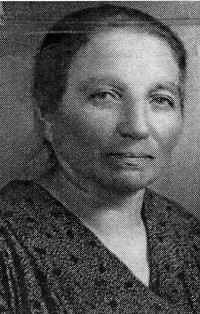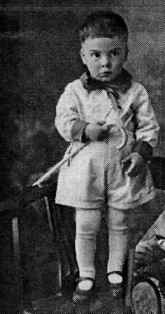 |
 |
 |
|
|
[Page 79]
Family Pictures
Jacob: Now I will show you family pictures. First of all, as you see here, is my mother. Occasionally I got these pictures somehow in America. After the Second World War, I didn't find anything at home. I found pictures what occasionally came to America, and I found them here.
|
|
|
The next is my brother's family. Here is his wife, with friends. The boy is my brother's older son in Pumpyan. On the left, you see a family picture, my brother and his wife, Abel and Vittel.
|
In this picture, you see myself, my mother, and my first wife; Chava Zacks was her name. I was married in Lithuania. She occasionally was in Pumpyan, and this is the picture of her, too, with my mother and myself.
[Page 80]
Other pictures were from later on. Here are pictures of myself, the way I looked being a young man in Pumpyan and in Ponevezh.
|
|
This picture is with a group of friends during the gymnasia years, and I am in this picture. I have to find myself.... Oh, I am standing. That's myself in gymnasia, in the happy years being in gymnasia. This is my friend Nahum Gershwin [center], who lives in New Jersey.
|
[Page 81]
Now another picture. Here is our graduating class in Ponevezh of the gymnasia. I am among them, this one [second row, fifth from left].
|
Now, that is my brother Yossel in Moscow, and the military man is his son, who retired as colonel, who lives in Kaliningrad.
|
There are more pictures of my brother and his family. This one is in Moscow. My brother, his wife, his daughter and his daughter's children.
|
[Page 82]
|
This is the picture of my Uncle Schindler. I told you we came together. Also here are two of his sons and his wife, my aunt; Goldie was her name. They all died, all dead, all four of them in this picture.
|
Now, here is the Jewish school, the Hebrew school, in Pumpyan. I was temporarily one of the teachers there.
Unfortunately and to my sorrow, most of the children you see here perished during the Nazi occupation. Some of them survived, and mostly who survived emigrated from Lithuania to South Africa or Israel-to Palestine, at that time.
|
Here also are the children of the school, quite a nice group. Here is myself among the teachers teaching.... Oh, yes, myself and my best friend, Laib Glitzman. He was the principal of the school. He was a writer, a poet, and he perished together with others during the Nazi occupation.
[Page 83]
|
Now, here is a picture of a military man. You know who it is? That's myself. Jokingly, I say I was a general in the Lithuanian army. I was not a general.
Now, by the way, I have to tell you something about my military experience. It comes later on, much later. But as I am showing pictures, I will mention I was in the military school, the only one military school. People who graduated from the university or other schools were accepted to the military school, and after graduation of the military school, a year of service, they became reserve lieutenants. I was one of them. There were in my time about four hundred pupils, and among them was three Jewish people. Later on was a fourth one, and I was one of them.
That was our uniform. It was a bright uniform, and I was coming from time to time to Kovno. The school was near Kovno, five kilometers from Kovno, in Shantz. So I was bright with my uniform and proud of it-white gloves, a special coat-and the girls looked at me like as a general, and that gave me a lot of happiness, if we can say it this way.
|
Josh: Who are the girls in this picture?
Jacob: This picture is a group of youth in Pumpyan. I have to add
[Page 84]
I was the one and only photographer in Pumpyan. I had a camera. I learned how to handle a camera, and whenever I came to Pumpyan-I used to come twice a year, sometime summertime, additional timeso I took a lot of pictures. All the pictures I show you were taken by myself.
|
This picture was a group ofJewish students at an agriculture school where I attended, the Agricultural Academy. That belongs to later year, and myself--will I recognize myself? Oh, yes, in the middle, this one in the middle. The Jewish students of the agricultural school, to this the description I will come later.
I think it is enough of picture showing. We will come to a time I will show you more of them.
|
|
JewishGen, Inc. makes no representations regarding the accuracy of
the translation. The reader may wish to refer to the original material
for verification.
JewishGen is not responsible for inaccuracies or omissions in the original work and cannot rewrite or edit the text to correct inaccuracies and/or omissions.
Our mission is to produce a translation of the original work and we cannot verify the accuracy of statements or alter facts cited.
 The Jacob Rassen Story
The Jacob Rassen Story
 Yizkor Book Project
Yizkor Book Project
 JewishGen Home Page
JewishGen Home Page
Copyright © 1999-2026 by JewishGen, Inc.
Updated 31 Oct 2018 by LA